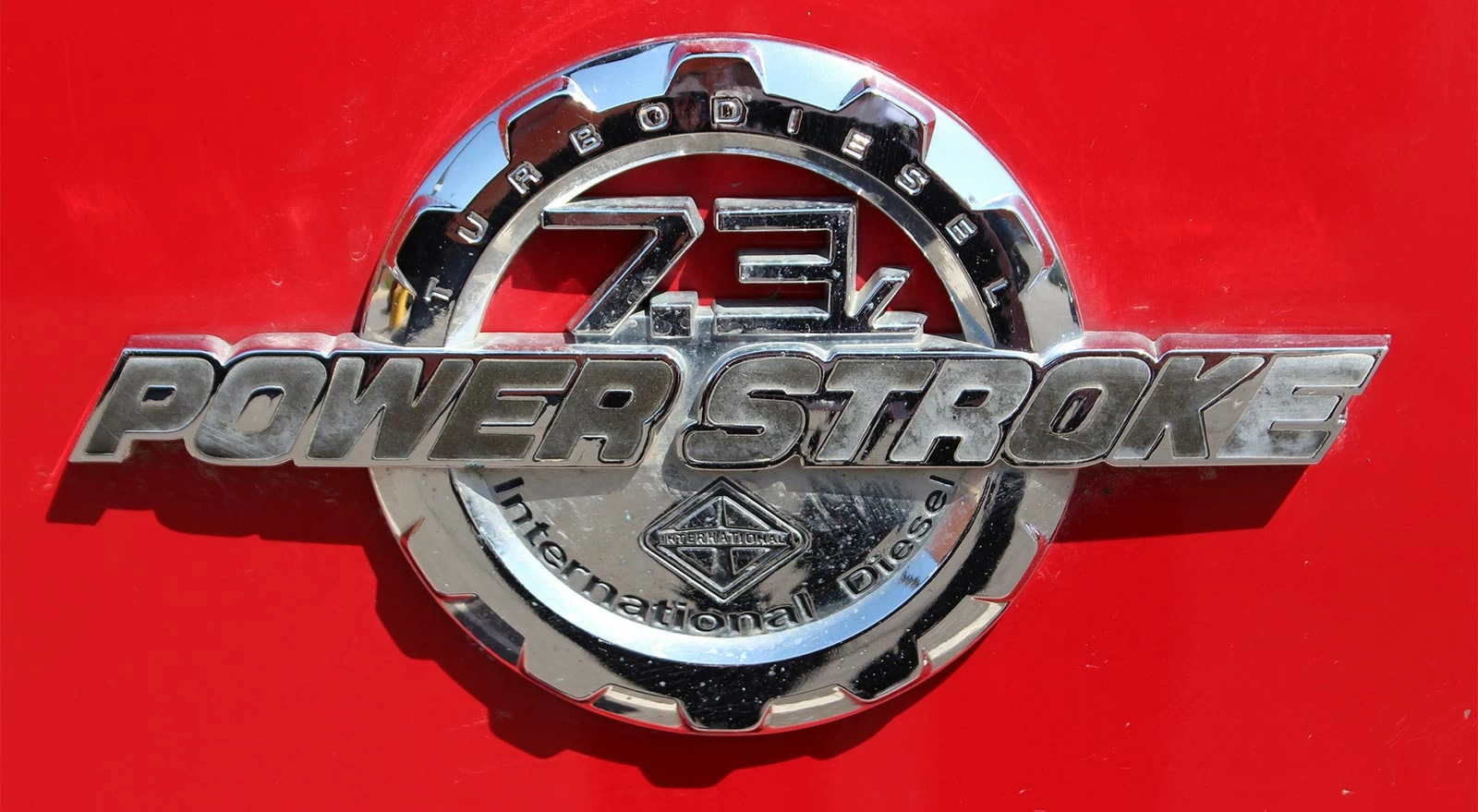

Although the first Powerstroke diesel engine didn’t debut until late 1994, the Powerstroke story actually started in 1982 when Ford began making diesel engines in partnership with ITEC (International Truck and Engine Corporation). This first one was a 6.9-liter indirect injection (IDI) engine. It produced only a modest 170 horsepower and 315 pound-feet of torque, but these were impressive numbers for the 1980s.
Production of the 6.9-liter IDI engine continued through 1987 before being replaced by the 7.3-liter IDI engine. This engine was produced between 1987 and 1993 and used the same stroke as the previous 6.9-liter but had an increased bore. Ford completely redesigned the cylinder heads and strengthened the engine block as well. This engine did not have a turbocharger. This 7.3L IDI engine was the predecessor of what we would all later come to know as 7.3-liter Powerstroke.
1993 saw the debut of the 7.3L with a turbocharger. The engine’s internal parts were also upgraded to withstand the turbo boost pressure. Despite the turbo addition, this engine didn’t get much of a power or torque boost. However, it ultimately didn’t matter as Ford was about to introduce the engine that would change the industry.
Produced between 1994 and 2003, the first Powerstroke turbo-diesel was a direct-injection engine. Some 7.3 Powerstroke parts from this era included a wastegate turbocharger, HUEI fuel injectors, and an air-to-air intercooler. Displacement in this engine remained the same as the previous engine, but the electronically-controlled direct-injection system enabled it to make as much as 21,000 psi.
With a 4.11-inch bore, 4.18-inch stroke, cast-iron block and cylinder heads, plus forged steel connecting rods, the first generation 7.3-liter Powerstroke was built to last, and it frequently went to 300,000 miles and further. The second generation of the 7.3-liter Powerstroke came out in 1999 and debuted the air-to-air intercooler and the HEUI fuel injectors.
HEUI fuel injectors were an important element of the new Powerstroke parts for the second generation. The new system required two oil pumps: a low-pressure pump and a high-pressure pump. The low-pressure pump puts oil into the high-pressure reservoir, which is then forced through oil lines into the high-pressure oil rails by the high-pressure pump. Injection pressure is between 500 and 3,000 psi, which results in a fuel pressure increase at the injectors by the oil pumps.
This second generation of 7.3-liter Powerstroke continued production through 2003 and is still touted by many diesel fans as one of the best diesel engines ever. It often reached over a quarter million miles.
ITEC, now Navistar, partnered with Ford again to make the 6.0-liter Powerstroke engine in 2003. The decision to leave the venerable 7.3-liter was in part due to strict new governmental emissions requirements. In order to stay competitive with the GM Duramax and Cummins Turbo Diesel, the Powerstroke needed to get more power and produce fewer emissions.
The new 6.0L Powerstroke utilized several pieces of new emissions control equipment as well as a new variable geometry turbo, which did help boost power up to 325 horsepower and 570 pound-feet of torque.
Unfortunately, some 6.0 Powerstroke parts were prone to failure, including the oil cooler, EGR cooler, high-pressure oil pump and head gasket among others. Although there are plenty of 6.0-liter Powerstroke engines still in service today, the perceived lack of reliability haunted its reputation, and Ford abandoned it in 2007.
Navistar partnered with Ford one more time to build the 6.4-liter Powerstroke in 2007. Previous Powerstroke diesel parts included the HEUI system, but this engine introduced a common rail system with piezoelectric injectors. Twin sequential turbochargers provided the boost for the 6.4. This engine produced 350 horsepower and 650 pound-feet of torque.
Although meeting the stringent diesel emissions requirements of the time, the 6.4 Powerstroke had other problems. One of the main complaints was its relatively poor fuel efficiency for a diesel engine. Nevertheless, it was undeniably quiet and had more power than the previous engine.
However, like the 6.0, it was only produced for a few years, and the Navistar-Ford partnership came to an end in 2010.
In 2011, Ford decided to make its own Powerstroke engine without Navistar. This engine boasted a fresh design with DualBoost variable geometry turbo and a water-to-air intercooler. The 6.7-liter Powerstroke benefitted from cutting-edge diesel technology such as its Instant Start feature and a lightweight compacted graphite iron engine block which made it 160 pounds lighter than the 6.4. Like the previous engine, the 6.7 uses a common-rail injection system.
Horsepower for this engine was initially 390 with 735 pound-feet of torque. Only a year later, Ford managed to boost it to 400 horsepower with a new turbo. Ford continued bumping up the power of the new 6.7-liter with an increase to 440 horsepower and 860 pound-feet of torque by 2015. In 2017, the engine’s peak torque rose to 925 pound-feet while the horsepower remained the same.
Thus far, the 6.7-liter Powerstroke has proven to be quite reliable compared to the two engines that preceded it. However, many diesel enthusiasts still venerate the legendary 7.3-liter. Fortunately, there are plenty of 7.3 Powerstroke performance parts available to continue getting the most out of this older engine if you don’t want to make the switch to Ford’s newest Powerstroke.
Whichever Powerstroke engine you choose, ProSource has all the performance diesel parts you need to get the most out of your truck.